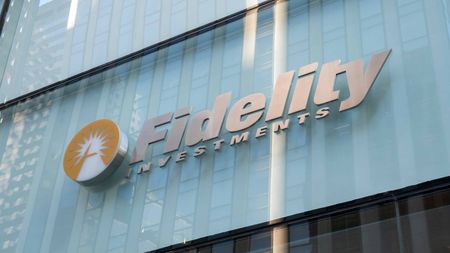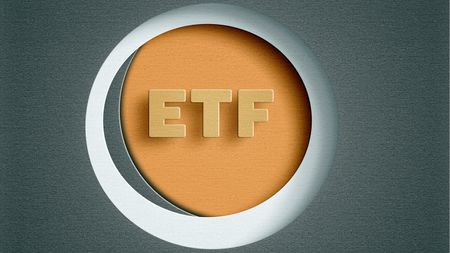5 Questions for a Gold Bug
Thomas Winmill, manager of the Midas fund, discusses investing in mining stocks and how he identifies quality companies.
Investing in gold-mining firms is in Thomas Winmill's blood. His father, Bassett Winmill, created one of the earliest gold-focused mutual funds in 1974. Thomas invested in that fund as a high school and college student. After college, he joined the family investment business, which acquired the Midas fund (symbol MIDSX) in 1995. He took over management of the fund at the end of 2001. Over the past five years through February 28, Midas has returned an annualized 31%, good enough to rank among the top 10% of precious metals funds.
In addition to gold mining stocks, the fund can invest in miners of other precious and non-precious metals, as well as in oil, natural gas and commodities. Lately, though, Winmill has been bullish on gold, and the fund's holdings reflect that. When we recently sat down with the New York-based Winmill, he suggested the interview's first question.
WINMILL: I figure one question you're going to ask is, is it true that only wackos invest in gold?

Sign up for Kiplinger’s Free E-Newsletters
Profit and prosper with the best of expert advice on investing, taxes, retirement, personal finance and more - straight to your e-mail.
Profit and prosper with the best of expert advice - straight to your e-mail.
KIPLINGER'S: Is it?
WINMILL: Probably. What I mean by that is that the wackos invest kind of with their hearts, and they give you huge opportunities. You have a lot of mispricing because of the emotion in the sector and because valuation parameters are different.
A lot of the public tries to apply price-earnings ratios to mining companies, but you really can't. A mining company is not really a business. It doesn't have a product it can put out. It doesn't have marketing people who can increase its distribution. Basically, it finds a deposit, mines a deposit, and then it shuts down. It's a project development company. So it goes from a zero P/E to a certain P/E way up here. But it's zero at the end. When it's finished, you don't really have a company. Someone might say, gosh, that mining company sells for three times earnings. I'm going to put that son of a gun in my IRA because I know these things sell for 30 times earnings. Three months later they're closing the mine down.
So the way to value a mining company that has a short life -- say, less than ten years -- is to determine what is the present value of its future cash flows.
Easier said than done, given the volatility of gold prices. Gold mining companies sell for 1.5 times their net asset value [primarily the value of their gold deposits]. That doesn't make any sense. It's because the revenue from gold goes up and down quite a bit. That volatility has given rise to a view of gold revenues as kind of an option. Look at a base metal company that produces iron or copper. These mining companies tend to trade around net asset value. That's because there's a perception these commodities have not been as volatile -- that they don't react to world economic events. But gold is seen as something you buy for insurance value. If the U.S. goes to war on Iran, or something like that, oil goes to $125 a barrel and gold goes to $1,200 an ounce [gold closed at $640.80 an ounce on March 2]. You just saved the rest of your portfolio from going downhill. Gold has that neat kind of save-the-day optionality.
What do you look for in a mining company? The good thing about a mining company is you can see the revenue coming a long way off. If you're going to open up a mine, first you have to find a deposit, prove the deposit, go through the permitting process, raise money, get all the equipment delivered and get studies from engineering firms on how you're going to get maximum value out of your deposit. In the old days you would allow five years. Now it's eight to ten because permitting has gotten complicated.
So a mining company says we think we'll bring this thing to production in 2011. So you can chart out -- assuming everything goes according to plan, and it often doesn't -- what the production profile is going to be. Is it a declining profile or an increasing profile? We look for quality mining companies, and we like to see a growth profile, which is not really understood by gold investors, who are kind of impatient. Valuations can get huge, and the hard thing is to figure out quality in the mining business.
I became the main portfolio manager in 2001, and when I started going to all these conferences meeting with mining management, I found that the quality of company management, and to a certain extent, the brokerage community, was much, much lower than in any other sector. Think about it, if you are a smart guy coming out of college in the late 1990s, where are you going to go? Are you going to work for a consulting company or Morgan Stanley? Go to Harvard Business School? Or are you going to go work for a mining company? There had been a bear market for 20 years, and they couldn't recruit their brother-in-law to join a mining company. They had no money. And the smartest people who were interested in geology basically wanted to save the earth. So the dregs of the geology world said okay, I can't get a job with the government. I can't get a job with the NGOs [non-governmental organizations]. I'll work for the mining companies because I get to go out in the field and horse around, live in a tent, stuff like that.
Getting quality in the mining sector is difficult. The way we screen for stocks is the so-called three Ps -- people, project and pricing. To get people right we look for firms that have bought mining companies successfully from a known deposit to production. But there aren't that many people around who have done that. It's funny, go to a mining conference now and you'll see hedge fund guys, slicked back hair, fancy $200 suits, the whole thing, and they wouldn't know bauxite from a banana peel. Things have changed.
What are some mining firms you like? I try to stick with quality because there's a huge amount of junk out there. The industry is as rife with con men as almost any other one. It's kind of like the Internet days when people were putting up dot-coms and had absolutely no idea what they were doing.
I meet with management to try to assess what is the growth profile and how likely they are to bring the project in on some close proximity to the announced schedule and budget.
I'm trying to stock up with intermediate names. The big mining companies are sucking wind. It's hard to produce five million ounces of gold a year, mostly because there hasn't been a ten-million-ounce gold deposit found -- I think there's only been one in the last ten years. The way to make money, in my judgment, is go a little further down in the food chain to find companies that go from 100,000 ounces to double that production. So my favorite stock would be Agnico-Eagle (symbol AEM). It will go from 240,000 ounces in 2006 to about 1 million ounces by 2011. Another one I like is Pan American Silver (PAAS). It produced 13 million ounces in 2006, and should go to around 22 million or 23 million ounces in 2009. [Agnico-Eagle closed at $36.61 on March 2, Pan American Silver at $26.97.]
These kinds of gold-mining companies also have a strong base metal component. When you're mining gold, it's not unusual to find other types of ore in there. So both Agnico-Eagle and Pan American get about 40% to 50% of revenues from zinc. Zinc was crushed in the first part of this year. Global zinc inventories are low, and zinc is going to get to a pinch point here, and it's going to go to $2.50 a pound [from about $1.49 currently], in which case Agnico-Eagle and Pan American are just going to coin money.
Do you feel threatened at all by the popularity of gold and silver exchange-traded funds? I am basically in favor of them. I think what the gold and silver ETFs have done is, pardon the expression, legitimize the asset class. A lot of people saw gold as a kind of loser investment class. Now that you can have an IRA and put 5% in a gold ETF means gold is okay. Gold has a part in the diversification pyramid, and that's good.
The silver ETF (SLV) is really interesting. It now has 126 million ounces in it. At the end of September, it was under 100 million. The known, above-ground stocks of silver are not nearly as robust as gold. I've seen one study that says it's 600 million ounces; another says 400 million. Say it's 500 million ounces, total. To have the silver ETF go from under 100 million ounces to over 125 million is a significant bite of world stocks. That ETF is now a fifth of all silver stocks. Silver is less used for photography now, but it's big in electronics. As world inventories go down, generally prices rise slowly. Then, when inventory levels get to very small levels, that's called a pinch point. Prices just go vertical. There are some industrial consumers that must have the metal -- if they don't, they go out of business. You see these pinch points, and suddenly the bidding just goes crazy. So I think silver can get quite exciting. I don't know when. But if the silver ETF starts knocking on 200 million ounces, which it could do this year, it's going to start getting a little hairy.
Get Kiplinger Today newsletter — free
Profit and prosper with the best of Kiplinger's advice on investing, taxes, retirement, personal finance and much more. Delivered daily. Enter your email in the box and click Sign Me Up.
-
 April RMD? Five Tax Strategies to Manage Your 2025 Income
April RMD? Five Tax Strategies to Manage Your 2025 IncomeTaxable Income The April 1, 2025, deadline for required minimum distributions (RMDs) is fast approaching for retirees who turned 73 in 2024.
By Kelley R. Taylor Last updated
-
 Rising AI Demand Stokes Undersea Investments
Rising AI Demand Stokes Undersea InvestmentsThe Kiplinger Letter As demand soars for AI, there’s a need to transport huge amounts of data across oceans. Tech giants have big plans for new submarine cables, including the longest ever.
By John Miley Published
-
 The 5 Best Actively Managed Fidelity Funds to Buy Now
The 5 Best Actively Managed Fidelity Funds to Buy Nowmutual funds In a stock picker's market, it's sometimes best to leave the driving to the pros. These Fidelity funds provide investors solid active management at low costs.
By Kent Thune Last updated
-
 The 12 Best Bear Market ETFs to Buy Now
The 12 Best Bear Market ETFs to Buy NowETFs Investors who are fearful about the more uncertainty in the new year can find plenty of protection among these bear market ETFs.
By Kyle Woodley Published
-
 Don't Give Up on the Eurozone
Don't Give Up on the Eurozonemutual funds As Europe’s economy (and stock markets) wobble, Janus Henderson European Focus Fund (HFETX) keeps its footing with a focus on large Europe-based multinationals.
By Rivan V. Stinson Published
-
 Vanguard Global ESG Select Stock Profits from ESG Leaders
Vanguard Global ESG Select Stock Profits from ESG Leadersmutual funds Vanguard Global ESG Select Stock (VEIGX) favors firms with high standards for their businesses.
By Rivan V. Stinson Published
-
 Kip ETF 20: What's In, What's Out and Why
Kip ETF 20: What's In, What's Out and WhyKip ETF 20 The broad market has taken a major hit so far in 2022, sparking some tactical changes to Kiplinger's lineup of the best low-cost ETFs.
By Nellie S. Huang Published
-
 ETFs Are Now Mainstream. Here's Why They're So Appealing.
ETFs Are Now Mainstream. Here's Why They're So Appealing.Investing for Income ETFs offer investors broad diversification to their portfolios and at low costs to boot.
By Nellie S. Huang Published
-
 Do You Have Gun Stocks in Your Funds?
Do You Have Gun Stocks in Your Funds?ESG Investors looking to make changes amid gun violence can easily divest from gun stocks ... though it's trickier if they own them through funds.
By Ellen Kennedy Published
-
 How to Choose a Mutual Fund
How to Choose a Mutual Fundmutual funds Investors wanting to build a portfolio will have no shortage of mutual funds at their disposal. And that's one of the biggest problems in choosing just one or two.
By Coryanne Hicks Published